
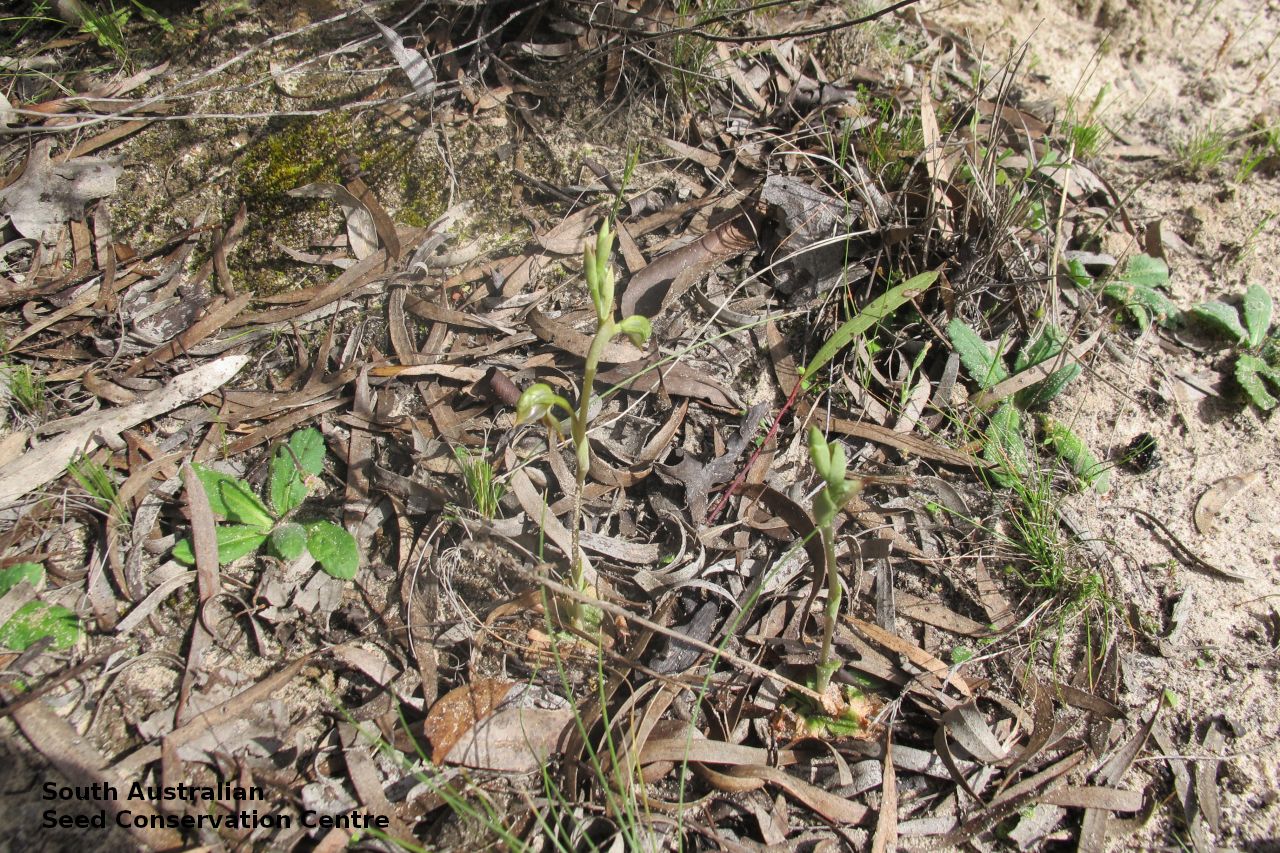
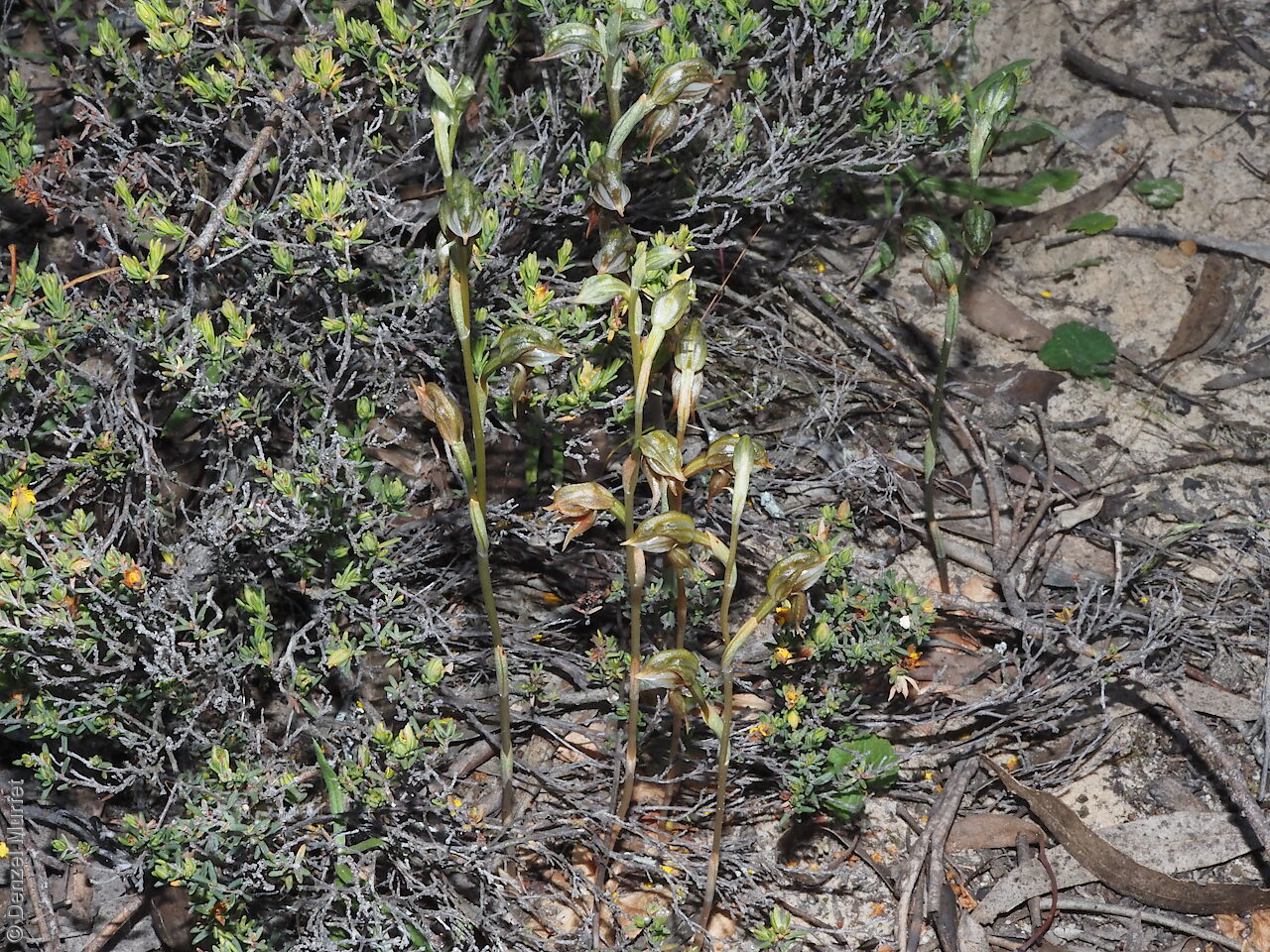
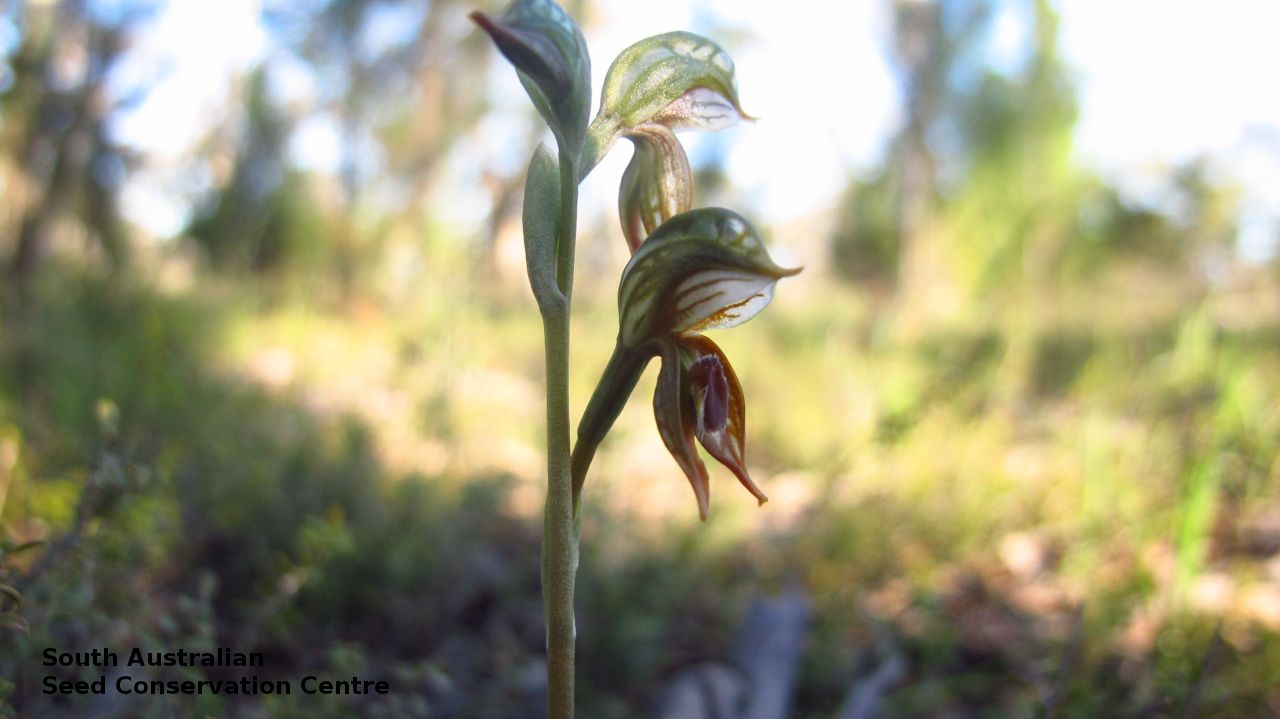
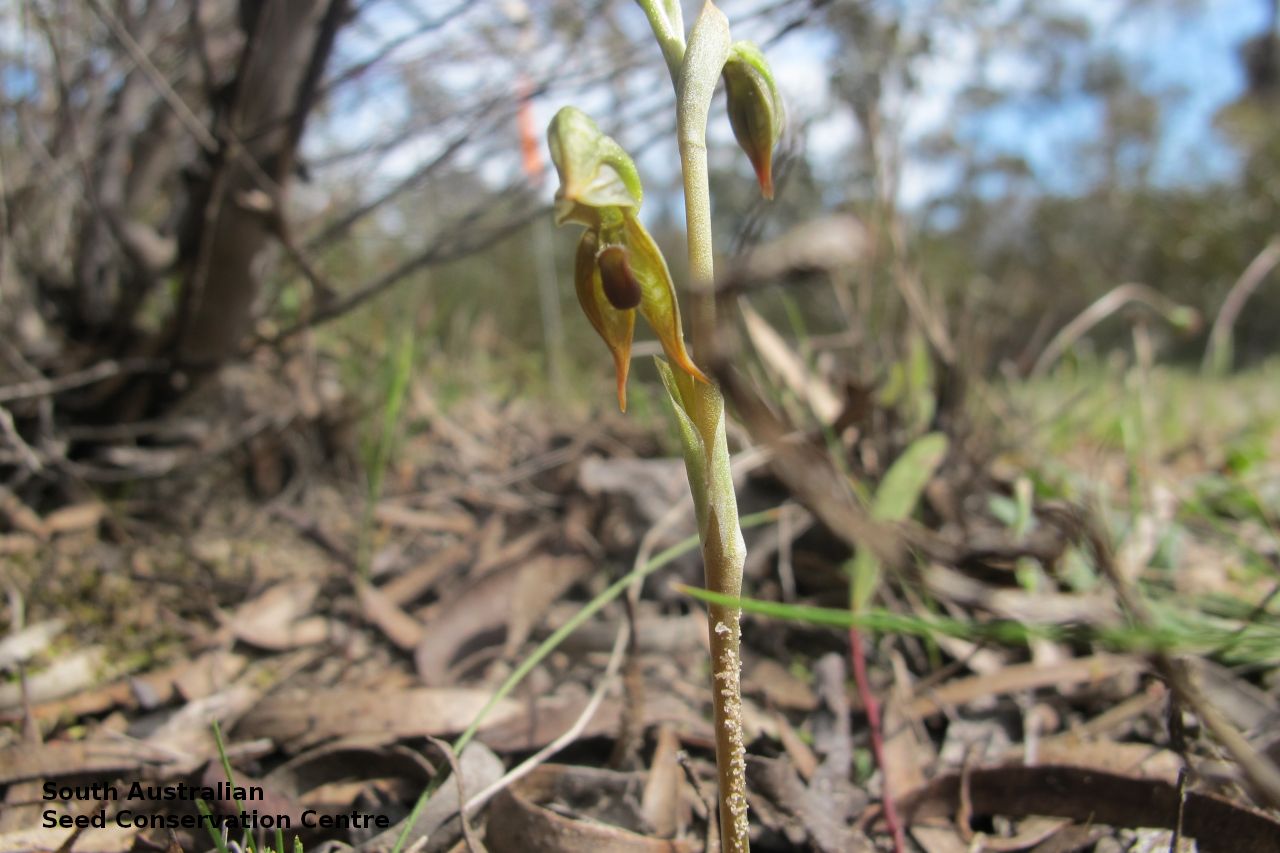
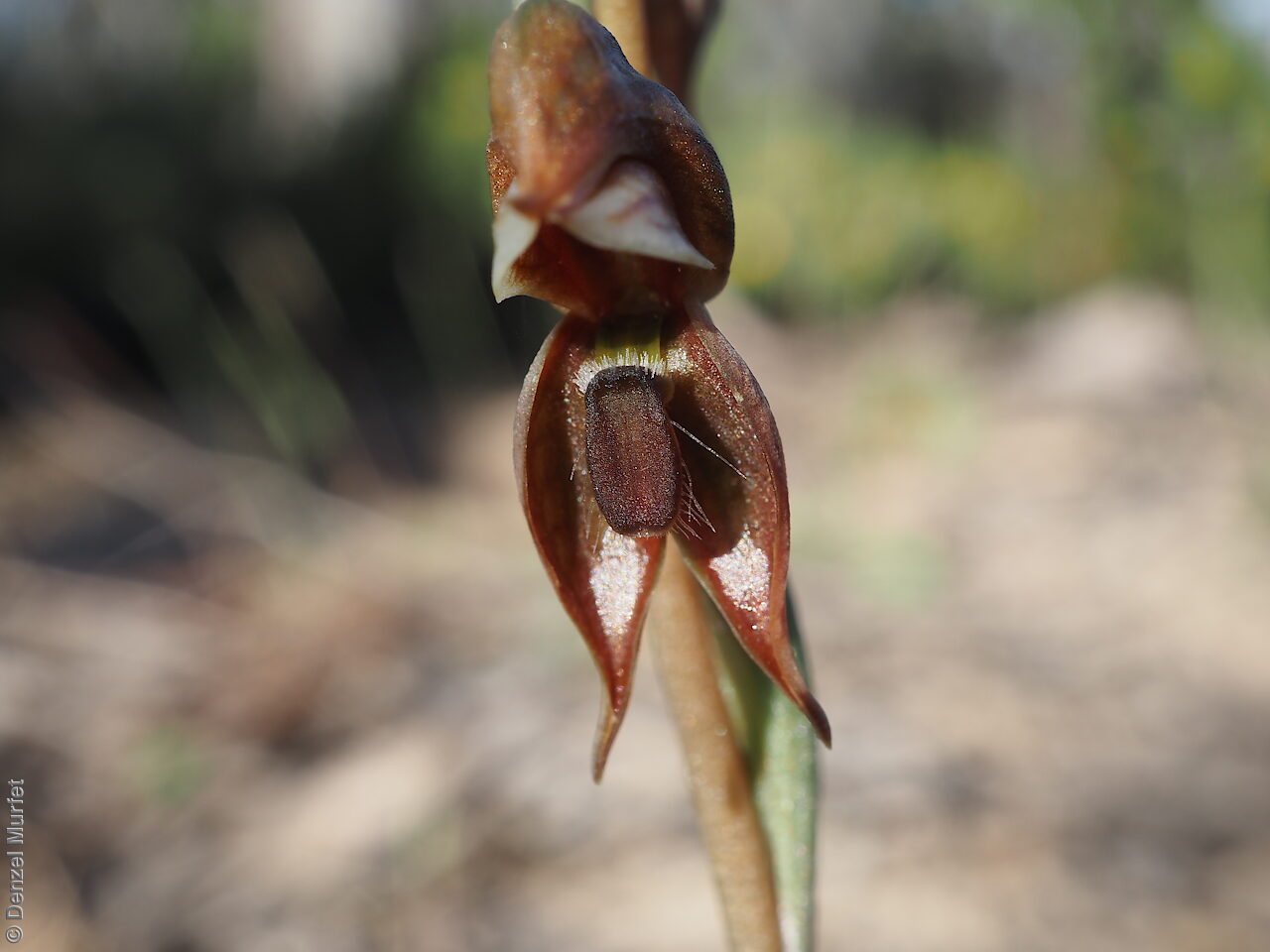
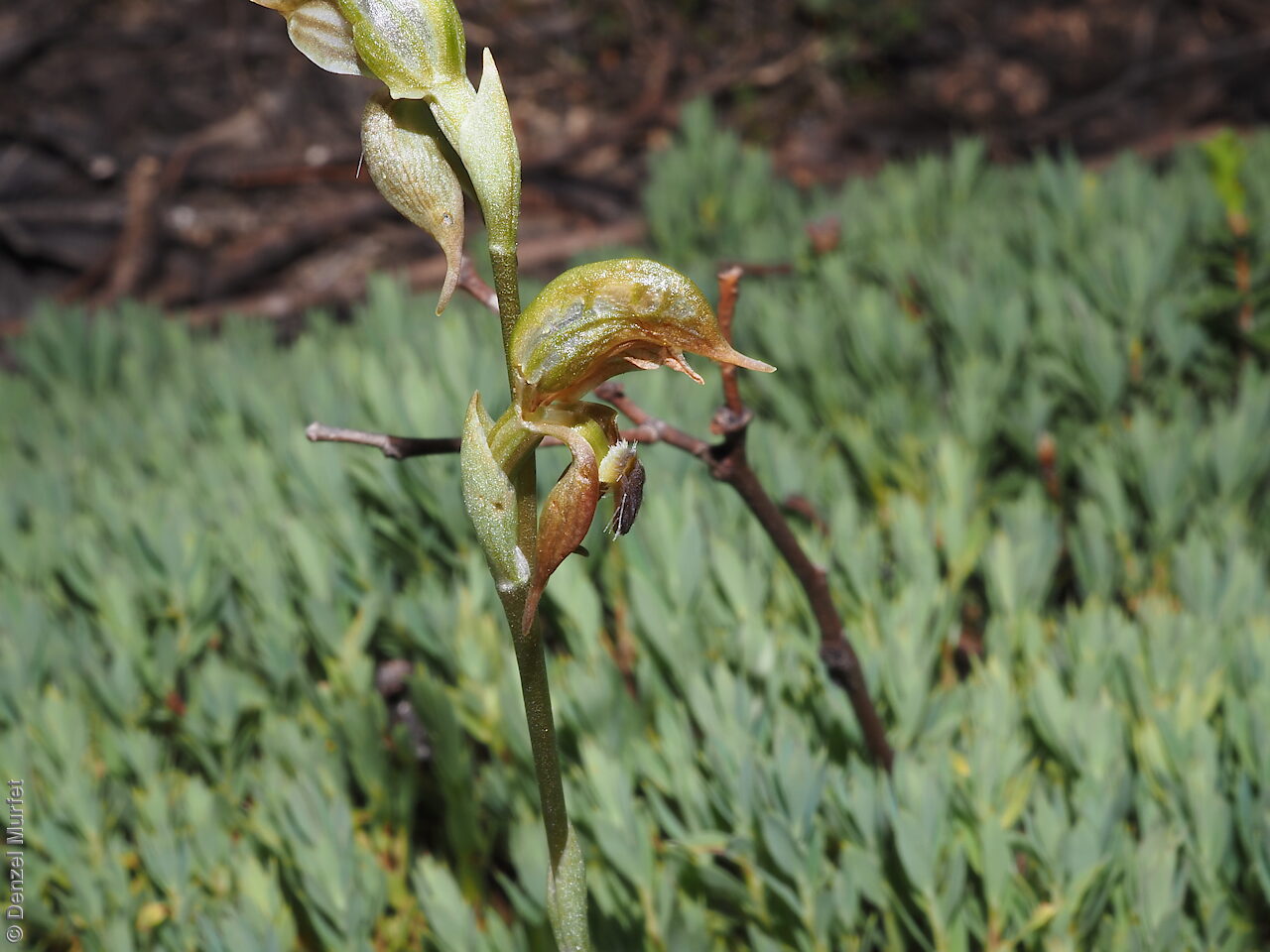
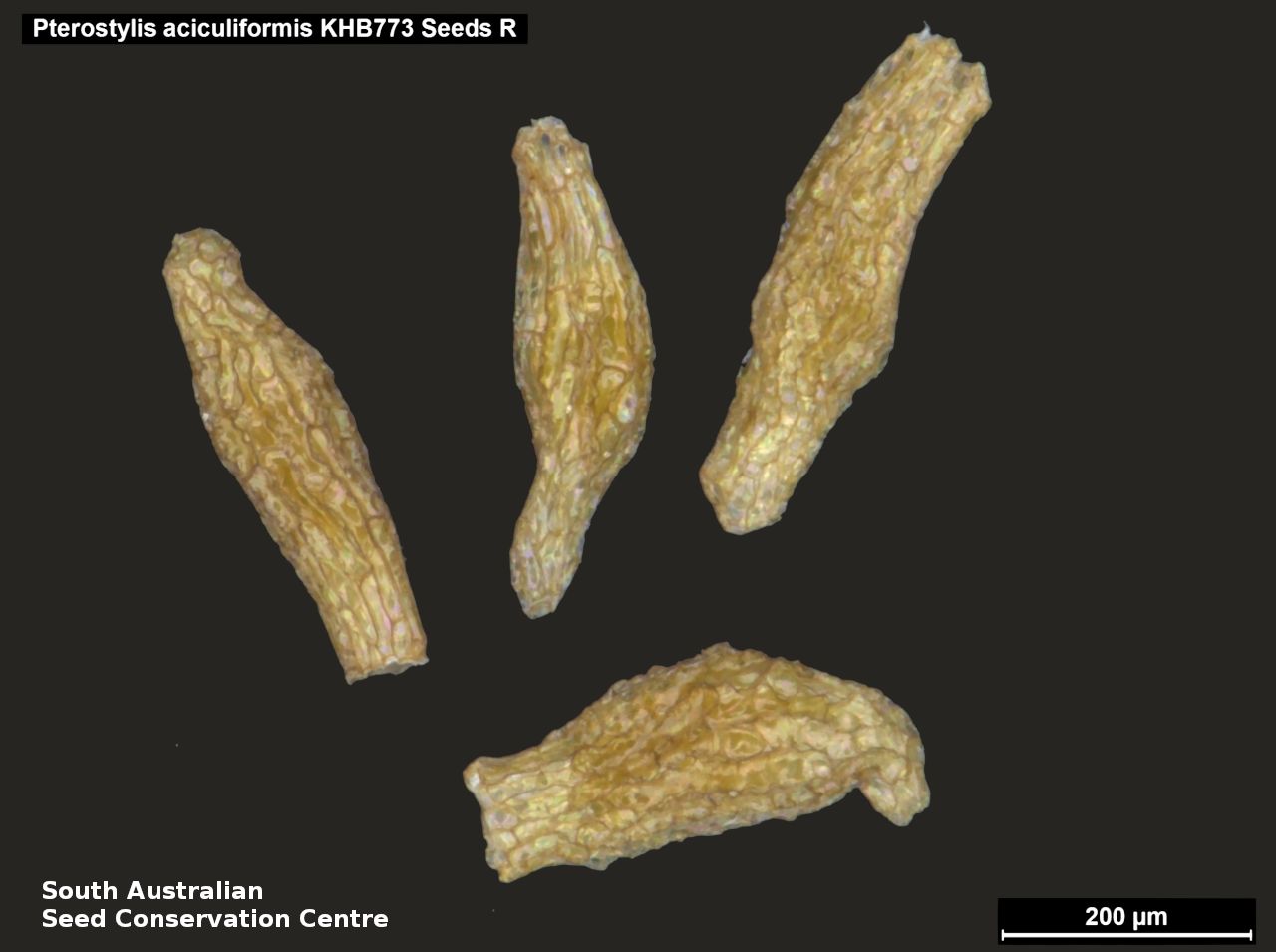
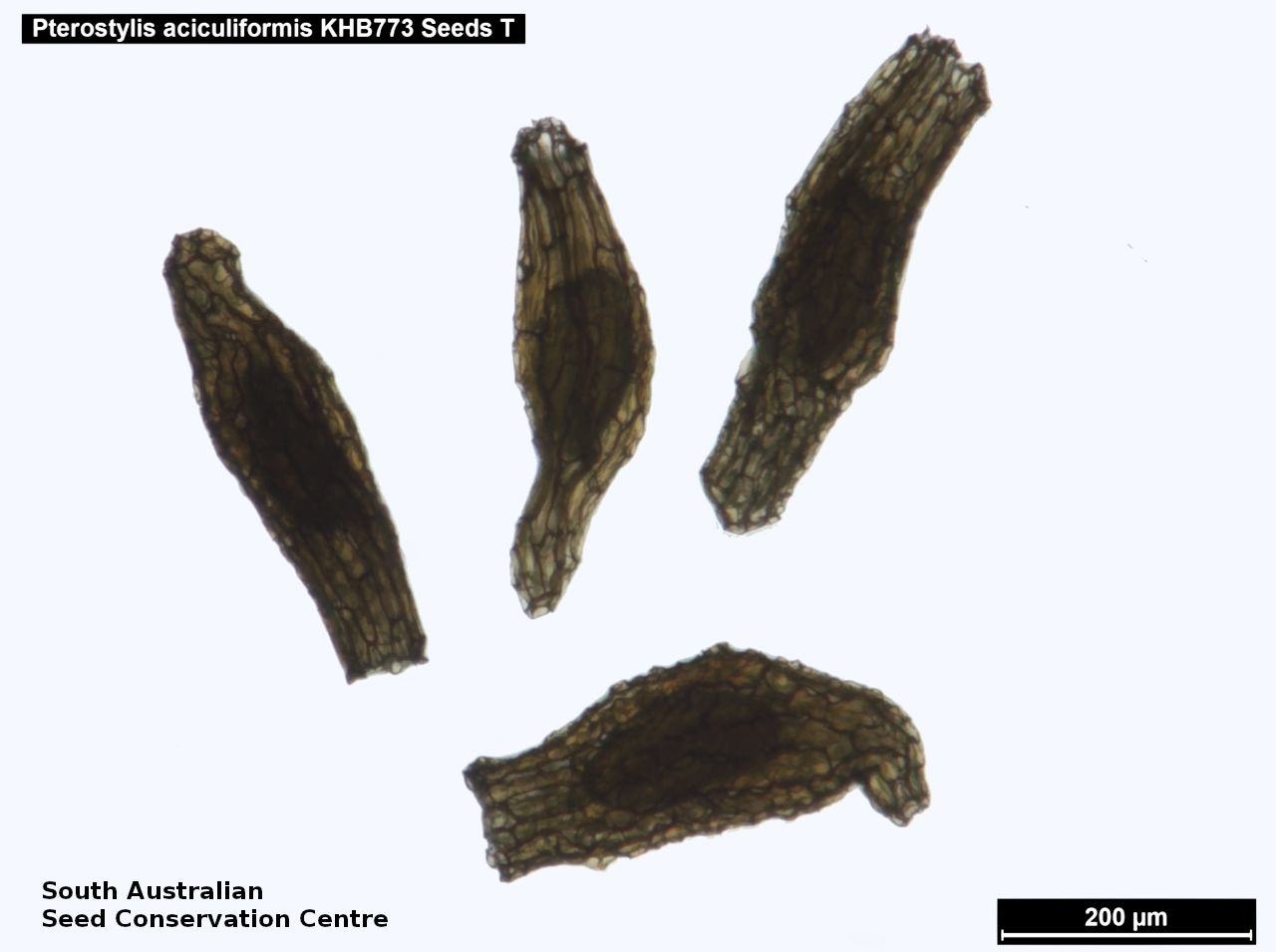


Etymology
Pterostylis from the Greek ‘pteron’ meaning a wing and ‘stylis’ meaning a style or column, referring to the prominent wings found at the top of the column in all species. Aciculiformis from the Latin 'acicula' meaning a small pin and the suffix '-formis', possible referring to the thread-like tips of the lateral sepals. Was formally called Pterostylis sp. Rock ledges (pl. 185, Bates & Weber 1990).
Distribution and status
Found in the southern Mount Lofty Ranges and the South-east in South Australia, growing in drier open forest and mallee scrub, on shallow stony or gravelly soil. Also found in New South Wales and Victoria. Native. Very rare in South Australia. Uncommon in the other states.
Herbarium regions: Southern Lofty, South Eastern, Green Adelaide
NRM regions: Adelaide and Mount Lofty Ranges, South East
AVH map: SA distribution map (external link)
Plant description
Annual terrestrial orchid growing from a tuber to 25 cm tall. Stem leaves 3–6, closely sheathing. Basal leaves of 4-7 forming a rosette, each oblong to elliptic to 30 mm long and 12 mm wide, margins entire. Inflorescence on a long erect stem with 1-12 transparent green with variable brown tonings flowers, semi-nodding. Dorsal sepal with an upcurved filiform point, labellum fleshy, oblong with a few white setae on the margins and base. A variable species but with larger flowers than Pterostylis pusilla and narrower lateral sepals than Pterostylis squamata. Flowering between September and December. Fruits are brown papery ellipsoid capsule. Seeds are very small brown ellipsoid seed with a long translucent brown mesh-like covering.
Seed collection and propagation
Collect seeds between September and February. Collect fat capsules as they start to dry and turn brown. Pods will split and release the seeds quickly and will require monitoring. To increase the chances of collecting mature pods, it is recommended that a small breathable bag (ie. Organza bags) be used to enclose the developing capsules. Place the capsules in a container that will hold fine seeds and leave to dry for a few weeks or until the capsule split. Then carefully hold the capsule and tap it gently to release the seeds. Store the seeds with a desiccant such as dried silica beads or dry rice in an air tight container in a cool and dry place, refrigerator or liquid nitrogen. For the NVC South East Orchid Project six populations consisting of more than 7 individuals in total were recorded from the Geegeela and Bangham Conservation Parks. Approximately 2,189,000 seeds (0.67g) were banked for these seven observed populations. Seed viability ranged from 48% to 74%.
| Location | No. of seeds (weight grams) | Number of plants | Date collected | Collection number Collection location | Date stored | % Viability | Storage temperature |
|---|---|---|---|---|---|---|---|
| BGA | 200,000 (0.067 g) | 10+ | 30-Nov-2011 | KHB618 South Eastern | 1-Nov-2016 | 68% | -80°C |
| BGA | 260,000 (0.089 g) | 10+ | KHB741 South Eastern | 1-Nov-2016 | 67% | -80°C | |
| BGA | 320,000 (0.105 g) | 10 | 13-Oct-2013 | K. Brewer South Eastern | 1-Nov-2016 | 77% | -80°C |
| BGA | 500,000 (0.17 g) | 15+ | 21-Sep-2013 | KHB746 South Eastern | 1-Nov-2016 | 48% | -80°C |
| BGA | 250,000 (0.085 g) | 15+ | 12-Oct-2013 | KHB773 South Eastern | 1-Nov-2016 | 68% | -80°C |
| BGA | 530,000 (0.179 g) | 30+ | KHB775 South Eastern | 1-Nov-2016 | 66% | -80°C | |
| BGA | 120,000 (0.041 g) | 12+ | 12-Oct-2013 | KHB781 South Eastern | 1-Nov-2016 | 74% | -80°C |
| BGA | 43,800 (0.015 g) | 5 | 14-Dec-2021 | DJD4055 South Eastern | 10-Aug-2022 | N/C | -18°C |
Number of plants: This is the number of plants from which the seeds were collected.
Collection location: The Herbarium of South Australia's region name.
% Viability: Percentage of filled healthy seeds determined by a cut test or x-ray.